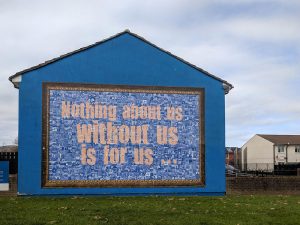The executive director of Center Against Spouse Abuse (CASA) felt threatened. The St. Petersburg, Florida, group’s split of governance and fundraising functions into a dual governance structure, designed to maximize fundraising contacts and preserve political autonomy, could give birth to a separate organization.
She had joined CASA 12 years earlier because it is a feminist organization that espouses social change and advocacy to remedy fundamental social inequities. The organization’s founders and successors see violence against women as a result of socially acceptable oppression (sexual harassment, pornography, lack of affordable child care, unequal pay) rather than individual pathology. CASA’s activities, such as advocating clemency for victims of abuse who kill their abuser, are sometimes controversial.
The board of directors that hired this executive director was made up of feminist activists, but they faced a problem. The growth of the organization since its founding in 1977 had increased the need for money from the business community. That was what worried the executive director. She had been fired from two previous domestic violence centers because she had refused to moderate her advocacy for social change. In each case, as the organization had become better known in the community, influential people with access to other people of means wanted to become involved on the board of directors. When they got on the board, however, they were uncomfortable with the nature of the organization and began to limit the staff’s advocacy role. As the executive director commented, “The conservative perspective seems to be endemic to people who are better at fundraising.”
With a budget of $2.5 million and a staff of 55 full-time-equivalent employees, CASA is now a significant organization in the St. Petersburg nonprofit community. Yet despite this growth and increased visibility, the staff and board have maintained their advocacy role. They confront the chief of police, judges, public defenders and elected officials, and speak out against public agencies from which they receive funding for their programs.
The executive director knew that for organizations with a social advocacy mission, growth can cause funding problems. She knew that CASA needed to raise money from the broader community, but if the agency were to take the traditional route of attracting board members with more wealth and connections, it might lose board members who understand and support their fundamental mission.
Diverse people who had an interest in the cause but were not prominent people in the community made up the board of directors. Though they recognized their duty to raise funds, they thought only about small-scale events. As the executive director said, “I knew we needed to raise more money, and I was pretty aware that the people who were currently on our board … were probably not the ones to be able to do that.”
The initial attempts at fundraising also took the board away from its other responsibilities. As one board member said, “When we began to start doing the fundraising, for a couple of years, all we did at board meetings was talk about events, the fundraising things we were doing, and then we got really behind on governance issues.”
CASA also saw its lack of connections with men in the business community as a problem. There were a few business people on the board, but they were mostly women who had been touched by domestic violence in some way. As one of the businessmen and CASA supporters said, “Domestic violence tends to be an issue that gets viewed as a woman’s issue. I hate to make stereotypes, but many men in business and leadership positions have a hard time relating to it and connecting to it. And CASA saw that as a real weakness….so [CASA wanted] to help them understand how prevalent this is and to get them engaged in a broader way in the community.”
The answer to CASA’s dilemma of how to retain the character of their mission while gaining the support of the conservative business community was to form a second board, which they called the trustees. A board of directors member who was active when the trustees were formed described the reasoning behind it this way: “[The executive director] was being very astute as to where her power base comes from and wanting to make sure that the movers and shakers who had the money weren’t necessarily going to come into the governance section and tell her that she can’t do clemency work or work with the gay community or this or that … So the concept of the trustees was to create something that would have big names on it … and to limit from that point of view of “Look, it’s quarterly meetings, and you gotta go to the breakfast, and you gotta have your friends and their checkbooks show up at the breakfast—that’s all we’re asking you to do.”
The trustee group was formed around an annual December fundraising event called the Peace Breakfast. People recruited for the trustees were asked only to come to quarterly meetings, help plan and stage the breakfast, and bring their friends and colleagues to the event. The Peace Breakfast is held from 7:30 to 8:30 on a weekday morning and consists of a speaker (often a survivor of domestic violence) and a solicitation for contributions. From a small beginning in 1997, it has grown to raise more than $175,000 for CASA’s general fund, becoming a must-attend event for St. Petersburg business people and politicians. As one staff member said, “They understand that they raise the money and they don’t designate how it’s spent.”
The first leader of the trustees, the manager of a local hospital, recruited five people to put on the first breakfast. As the event grew, membership grew. As he said, “Once we decided on what event we were going to do, and did the event for a couple of years, and started getting some real success with that one event, suddenly we went from looking around the room at five people to looking around the room at 15 to 18 people every meeting. Success always begets success, and people want to be involved in something that’s successful.”
A few years into the process, CASA hired an influential woman with broad connections to recruit for the trustees, so that the trustee group reached 50 members.
Sign up for our free newsletters
Subscribe to NPQ's newsletters to have our top stories delivered directly to your inbox.
By signing up, you agree to our privacy policy and terms of use, and to receive messages from NPQ and our partners.
The trustees do not have a formal legal role in the organization, but do have their own chair and vice chair. A member of the board of directors is designated to be the liaison with the trustees and attends the trustees’ quarterly meetings. Meetings include an update from the executive director, and trustees also receive newsletters and other communications about CASA between meetings. They are, according to one trustee, “Very attentive and interested in how things are going, but the trustees don’t get to the level of really wanting to review financials … they’ve never expressed a desire to want to know exactly where our money is being spent.” Trustees are required to make a financial donation, to tour CASA upon joining, and to bring two people to tour CASA during the year, thus broadening the educational impact of the group on the business community.
CASA’s 17-member board of directors performs the governance functions for the organization, and fully supports the program goals and social-change emphasis. They meet six times a year as a full board; committees meet in the month between full board meetings. The board creates policy, provides financial oversight, and evaluates the executive director, but is not involved in agency programs except for strategic planning. Instead, the board empowered the executive director to create and implement programs, and report program information to them. All directors are financial contributors, though most cannot give large amounts.
The board of directors sees the trustees as the group that puts on the Peace Breakfast. The chair of the trustees is invited to board meetings and sometimes attends; board members are invited to trustee meetings and a few attend. A businessman who has been a member of the board of directors and now serves as a trustee said, “The two boards function independently—I don’t know that there’s any reason, any cause, or any way that they would be in conflict. Each has their mission, their mission statement, and we’re busy doing what we need to do. We don’t have time to get involved in [governance tasks]. I don’t think there’s anybody on the trustees that’s really, really nosy about what the board of directors does, and vice versa.”
Board members understand that, even with the trustees’ efforts, fundraising is part of the board’s role as well. They are involved in the annual campaign, and they sponsor a golf tournament and a gala. However, the Peace Breakfast has taken much of the fundraising pressure off the board. In addition, the involvement of the trustees adds prestige to the organization in the community, and the board members feel good about community leaders being involved with CASA.
The trustees group has had a positive impact on CASA’s fundraising and has extended CASA’s message into the business community. There have been other positive effects as well. Individual members have become pro-bono resources to the executive director, such as a lawyer who has advised the group in a lawsuit, a marketing executive who helped CASA’s marketing campaign, and a restaurant owner who has provided meeting space and food.
The trustees provide support without interfering in policy-making or questioning the goals of the organization. The minimal involvement of the trustees is exactly what the organization wanted when the group was started. As the executive director said, “And those who just want to come to lunch four times a year, come up with a few ideas for the event itself, and bring their tables, we’ve got their money. We’ve got their support. We’ve got their name. We’ve got their access to some of their friends that they bring to us. It’s a simple formula that has turned out for us to work quite well, and it has not changed who we are.”
The success of the trustees is raising questions about the future of fundraising at CASA. A number of trustees have increased their involvement in CASA by joining board committees, and last year’s board gala was co-chaired by three members of the trustees. The hospital administrator who was the first chair of the trustees is concerned about keeping the attention of trustees with just the one event. As he said, “You’ve always got to keep changing, keep developing or evolving because people get bored, people lose interest unless you continue to evolve in some kind of way … It’s a hot event for two or three years—actually somewhere I read some fundraising book that said fundraising events have a life of about seven years and then they die. So that’s the thing to think about, how can we evolve this so that it keeps people’s interest?”
This trustee wants the group to become a separate foundation with responsibility for all the fundraising done by CASA. In 2001, he proposed that to the board of directors, but the groundwork had not been properly laid and the board had a negative reaction. For the moment, the question has been tabled, but it will likely be raised again.
The executive director is concerned that this would lead the board to abdicate its fundraising responsibility, and that CASA’s board, made up of people who are not community leaders, needs to maintains the organization’s ties with its grassroots origins.
The board is concerned that if the trustee group were to do all the fundraising, they would want to control how the money is spent. A development staff member said there may be some of that sentiment among the trustees already. She recalls a comment something like “We’re not the wives’ auxiliary. We raise it, they spend it.” If the trustees designated where the funds they raised were spent, the executive director’s fear about losing CASA’s advocacy role could come true after all.









